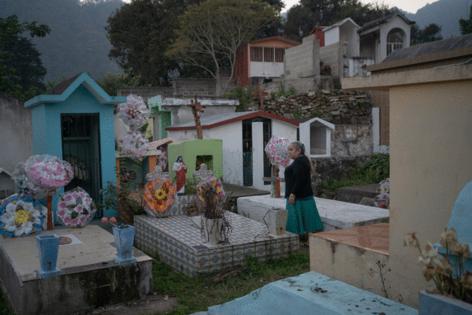After 25 years of selling tamales in Chicago, an undocumented immigrant mother returns to Mexico without her family
Published in News & Features
Claudia Perez’s children could count on one hand the number of times they had seen their father cry.
The day their mother left was one of them.
Perez had worked her whole life for a dream that did not come true: Save enough money to take her family back to Mexico and live together in the town where they were all born.
Instead, on a cold February day, she stepped onto a bus in Chicago's Brighton Park neighborhood and said goodbye. The day had come to make the difficult choice between her loved ones in Mexico and her family in Chicago.
“Don’t leave my love. No te vayas viejita,” her husband yelled as she waved goodbye from inside the bus.
Battling health problems and a ticking clock, Perez, 63, chose to leave the life she’d built for herself and her family over the past 25 years. Though she was a successful street vendor in Little Village, she was in the country without legal permission. And she yearned to return to Mexico to hug her aging siblings, visit her parents’ graves and see the houses she’d built for her family using the money she’d earned selling tamales in Chicago.
Her husband, Seferino Arguelles, tried convincing her to wait so that the two could go back together. “Just a couple more years,” he would tell her, urging them to leave the business ready to be passed down. But Perez was afraid that if she waited any longer, she would never return. Not alive at least.
It’s a dilemma that scores of families living in the U.S. illegally experience quietly as the community ages. Some are sick or unable to work, and many immigrants want to make the reverse migration to see their loved ones and homelands before they die. But in doing so, they may never be able to return to the U.S. and see the relatives they left behind.
Over the last several decades, reverse migration of immigrants in the U.S. without legal permission to Mexico has been a slow but steady trend, according to the Pew Research Center and other immigration researchers. The voluntary departures have, in part, kept the population of people in the U.S. illegally at a stagnant number of about 11 million, nearly the same as in 2017, according to Pew, despite the increased number of new migrants crossing the southern border, immigration experts say.
But with comprehensive immigration reform stalled in Congress, and a nation divided on how to resolve it, the choice to stay or go becomes inevitable for some.
...continued
©2024 Chicago Tribune. Visit at chicagotribune.com. Distributed by Tribune Content Agency, LLC.







Comments